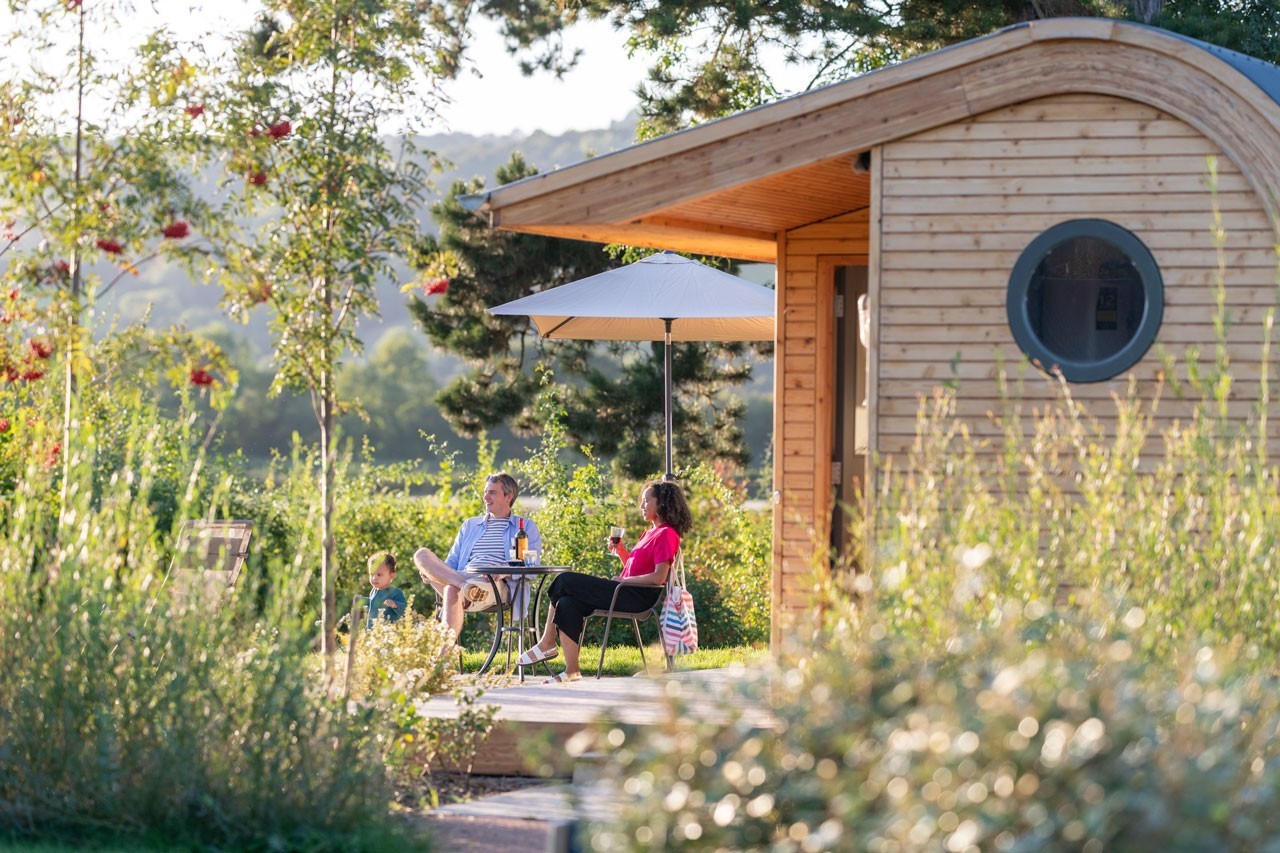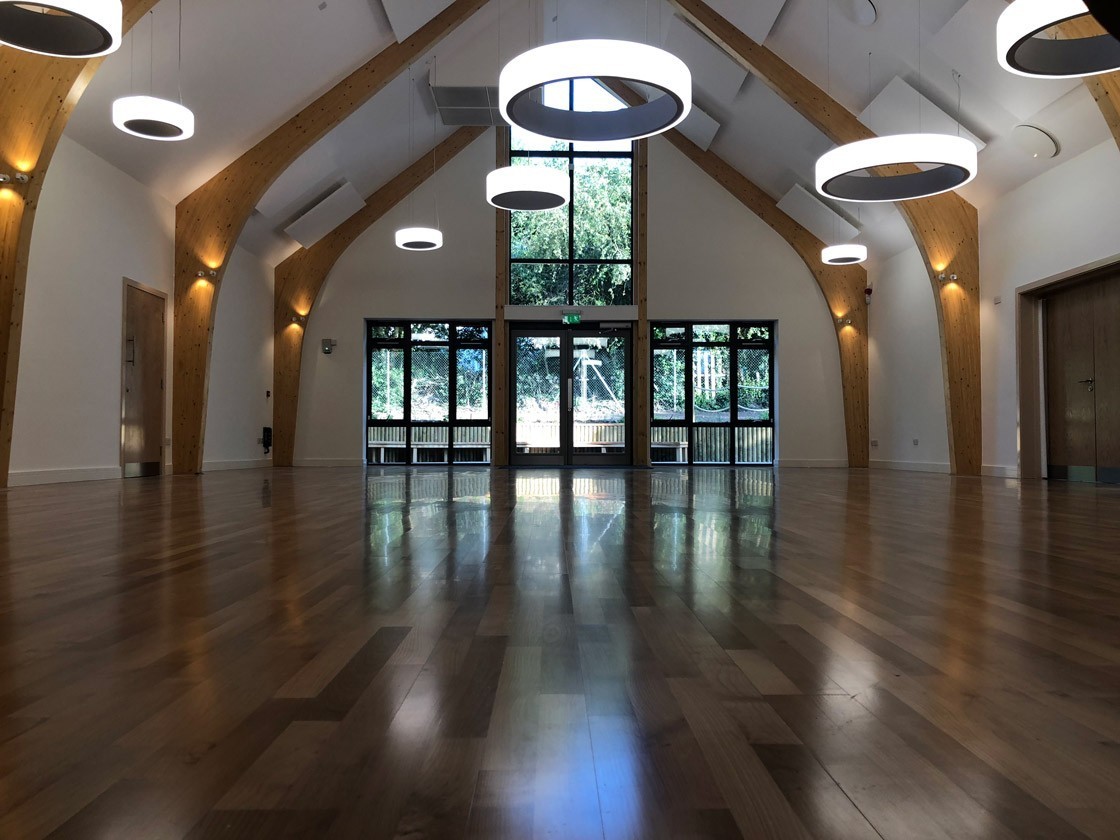What is glulam?
Glued laminated timber (also abbreviated as glulam) is a structurally engineered wood product, manufactured by bonding layers of timber together using a durable, moisture-resistant structural adhesive.
Glue laminated timber is the product of a manufacturing process where a number of smaller layers of timber are glued together to make a larger, single component. It is a way of manufacturing timber elements that cannot be easily sourced in solid timber due to their large size or unusual shape.
Glulam was first used in Europe in the early 1890s. A 1901 patent from Switzerland signalled the true beginning of glued laminated timber construction.
Today glulam is adopted for residential, commercial and industrial spaces. At Buckland Timber, our commissions range from a single glulam beam (used as a lintel or post), the framework for a residential extension, right through to the manufacture and installation of ecclesiastical buildings


Glulam is used for a wide range of purposes from joinery through to large span structural beams. Large glulam beams can often be seen in swimming pools or sports hall roof structures, more recently several large supermarkets have adopted glulam as both a decorative and structural component of their commercial spaces. Basically, wherever a steel or concrete structure is utilised for a building, glulam could also be adopted as a more sustainable and friendlier looking alternative.
Frequently asked questions about glulam
What is glulam used for?
Glulam is used in construction to provide a framework for buildings in the same way that steel is used but with better sustainability credentials. Because of glulam’s aesthetic, natural qualities, unlike steel, it is often left exposed as part of the interior decorative scheme. Glulam can also be used for single beams for things like lintels (above doorways) or ridge beams in roof construction.
What is a glulam portal frame?
Portal frame structures are designed to span between supports and rely on fixed joints with moment resisting capacity where vertical supports connect to horizontal beams or trusses. Portal frame structures can be constructed using a variety of materials and methods.
Glulam v Steel?
Glulam can out-perform steel in a fire where steel distorts in high temperature the surface of timber becomes damaged, but the integrity of the shape remains intact.
Glulam v CLT?
Glulam and CLT are very similar in structural and aesthetic qualities – think of CLT as glulam’s larger uncle.
Does glulam have a smaller carbon footprint than concrete?
Yes, a glulam structure has a sixty per cent lower carbon footprint than concrete.


Contact Keith O Ceallaigh:
If you have any questions about glulam contact Keith at Buckland Timber.
Email: keith@bucklandtimber.co.uk
Tel: 01363 891 363